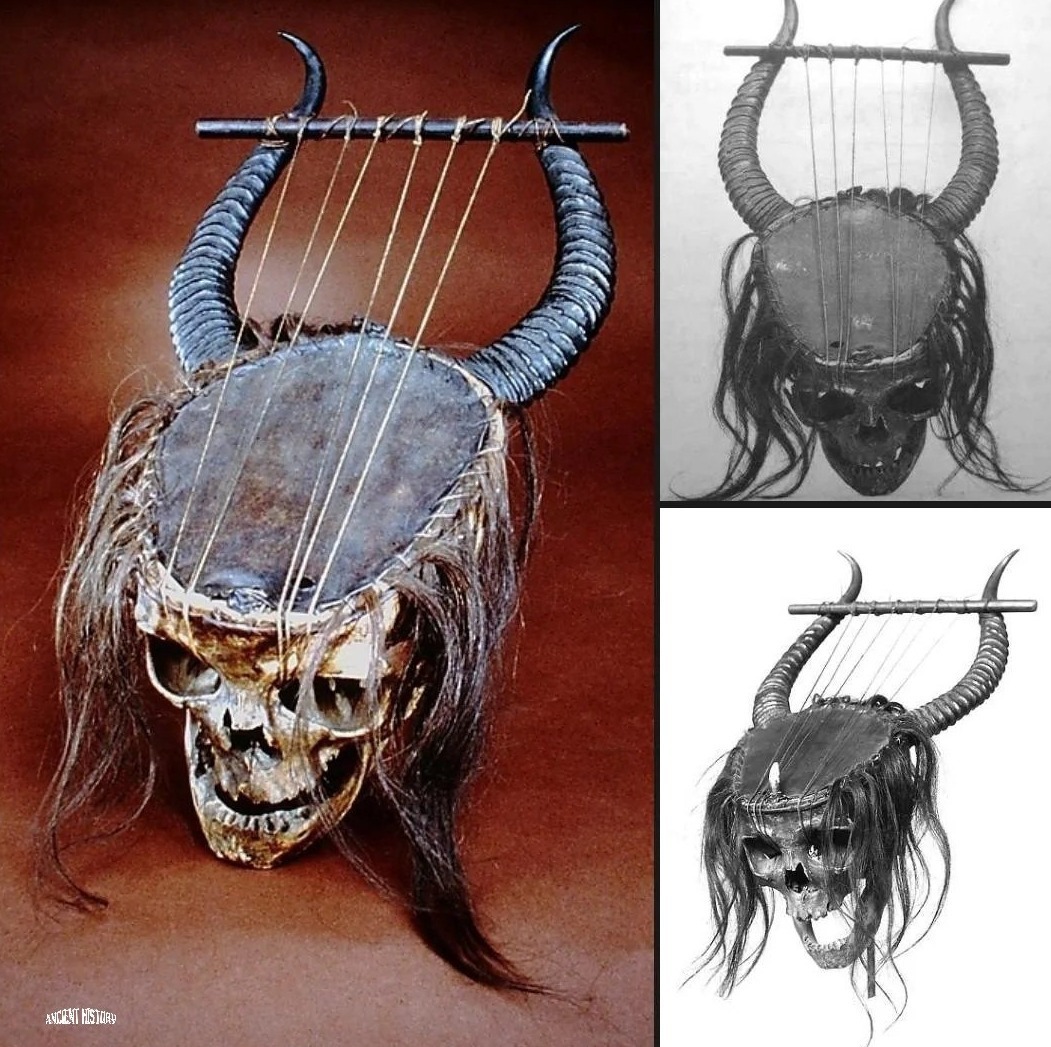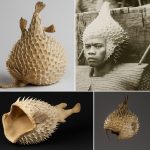The Human Skull Lyre: Music of the Ancestors

Among the most haunting and extraordinary artifacts of equatorial Africa is the human skull lyre, a rare ceremonial instrument that fuses music, spirituality, and ritual into one striking creation. Believed to have been crafted between the late 19th and early 20th centuries, these lyres originated from tribal groups in what is now the Democratic Republic of Congo. More than an object of sound, the skull lyre was a vessel of ancestral connection—a bridge between the living and the dead, where every vibration carried spiritual weight.
An Instrument of Flesh and Spirit

The construction of the skull lyre is both macabre and ingenious. Its resonator was formed from a real human skull, carefully prepared and crowned with twisted horns. The cranium was stretched with animal hide, sometimes still adorned with tufts of hair, amplifying its dramatic appearance. Strings were drawn across the surface, transforming bone into a living source of sound.
To those who crafted and used it, this was not merely an instrument but a sacred object. Every note that emerged carried the presence of the ancestors, a form of communication with spirits that blurred the boundary between ritual and performance.
Cultural and Ritual Significance
The human skull lyre reflects the profound role of music in African spiritual and communal life. Instruments often served not just as entertainment but as tools for healing, storytelling, and religious ceremony. In this case, the lyre’s very material embodied ancestral power. By incorporating human remains, the artifact became a ritual conduit, believed to channel voices from beyond and to preserve the energy of the deceased.
During ceremonies, the lyre may have been played to accompany chants, dances, or rites of passage. Its eerie timbre—shaped by the unusual resonator—would have amplified its aura of mystery and sacredness, ensuring that each performance resonated with both the living and the dead.
Anthropology and Interpretation

From an anthropological perspective, the skull lyre challenges Western notions of art, death, and spirituality. While some may view its construction as unsettling, within its cultural context it represented respect for ancestry and the integration of the human spirit into communal life. The skull was not desecration but continuation—an acknowledgment that the dead still had roles to play in guiding the living.
Artifacts like this also highlight the creativity and resourcefulness of indigenous societies, who transformed available materials into powerful cultural symbols. Each skull lyre is a testament not only to craftsmanship but also to a worldview in which music, ritual, and identity were inseparable.
A Rare and Haunting Legacy
Today, surviving human skull lyres are extremely rare, often preserved in museum collections where they continue to fascinate and unsettle viewers. They stand as reminders of the sacred role of music in African traditions, where sound was never just sound but a force capable of shaping spiritual realities.
Conclusion
The human skull lyre is more than an artifact—it is a story in sound and silence, ancestry and artistry. Crafted from bone, hide, and horn, it served as a vessel for ritual power and a channel for ancestral voices. Haunting yet profoundly meaningful, it embodies the idea that music is not only for the ears but for the soul, linking the living to the eternal presence of those who came before.











